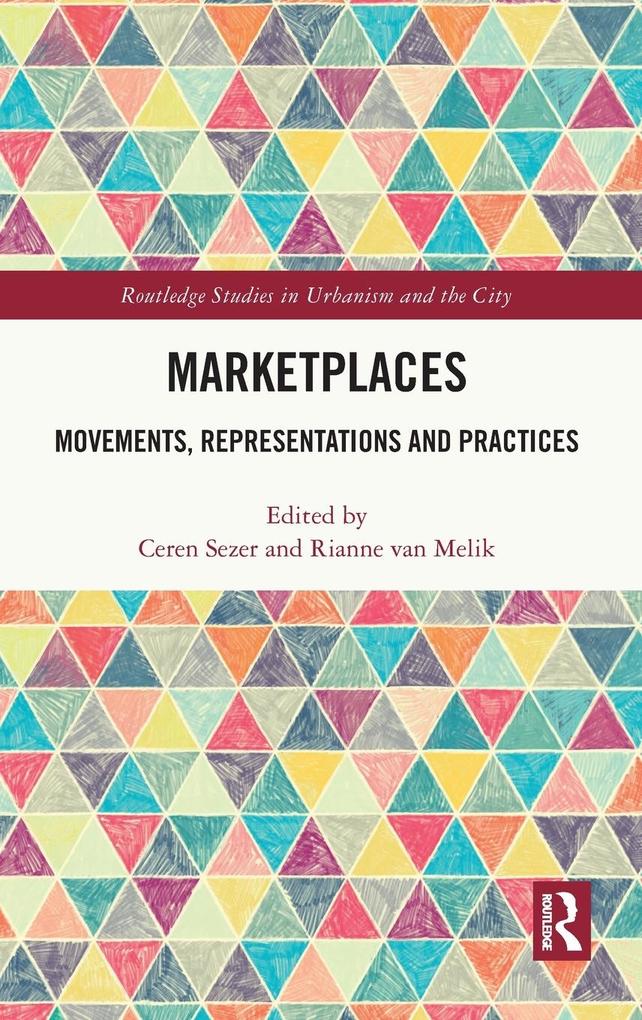
Zustellung: Sa, 07.06. - Do, 12.06.
Versand in 1-2 Wochen
VersandkostenfreiBestellen & in Filiale abholen:
This edited volume portrays marketplaces from a mobility perspective as dynamic and open entities consisting of flows of people, goods and ideas.
There is a renewed interest in research and policy arenas in marketplaces as the core of cities' spatial and economic development and sociocultural life, as incubators of urban renewal and platforms of alternative consumption models and as source of livelihood for many people worldwide. Contributions of this book draw on notions of movements, representations and practices to illustrate that markets have physical reality but are also culturally and socially encoded, and experienced through practice. It brings together empirically evidenced scholarly and practice-based works from the United Kingdom, the Netherlands, Switzerland, Spain, Bulgaria, Turkey, Lebanon, Peru, Brazil, Vietnam, South Africa and India.
This book is primarily intended for scholars and graduate students of urban geography, urban design and planning, sociology, anthropology, who are interested in the relation between place and mobility in general, and markets as 'knots' in the city, in particular. It also informs policy-makers how urban planning policies and design interventions for marketplaces may foster more socially inclusive and environmentally just cities.
Chapters 1, 12, and 13 of this book are available for free in PDF format as Open Access from the individual product page at www. routledge. com. They have been made available under a Creative Commons Attribution-Non Commercial-No Derivatives 4. 0 license.
There is a renewed interest in research and policy arenas in marketplaces as the core of cities' spatial and economic development and sociocultural life, as incubators of urban renewal and platforms of alternative consumption models and as source of livelihood for many people worldwide. Contributions of this book draw on notions of movements, representations and practices to illustrate that markets have physical reality but are also culturally and socially encoded, and experienced through practice. It brings together empirically evidenced scholarly and practice-based works from the United Kingdom, the Netherlands, Switzerland, Spain, Bulgaria, Turkey, Lebanon, Peru, Brazil, Vietnam, South Africa and India.
This book is primarily intended for scholars and graduate students of urban geography, urban design and planning, sociology, anthropology, who are interested in the relation between place and mobility in general, and markets as 'knots' in the city, in particular. It also informs policy-makers how urban planning policies and design interventions for marketplaces may foster more socially inclusive and environmentally just cities.
Chapters 1, 12, and 13 of this book are available for free in PDF format as Open Access from the individual product page at www. routledge. com. They have been made available under a Creative Commons Attribution-Non Commercial-No Derivatives 4. 0 license.
Inhaltsverzeichnis
1. Introduction, 2. Hanoi's street vendors on the move: Itinerant vending tactics and mobile methods in the Socialist Republic of Vietnam, 3. Rhythmic encounters in an Indian marketplace, 4. Spectral analysis of rhythms in urban marketplaces: A day in Esat Marketplace of Ankara (Turkey), 5. Adaptable market-making in eThekwini: Exploring practices of street trading in a South African urban space, 6. La Boqueria, "the mirror of what Barcelona represents": An analysis of public policy and the commodification of food markets, 7. The fluidity of a liminal marketplace: Souq Al-Ahad, Beirut, 8. Marketplace decline heads east: Neoliberal reform, socio-spatial sorting and patterns of decline at Sofia's public markets, 9. Government's representation of Belo Horizonte's public markets: The (ir)reconcilable grammars of economic pragmatism and social justice, 10. Lima markets beyond commerce: Challenges and possibilities of common food spaces in periods of crisis, 11. Markets and belonging: Untangling myths of urban versus small-town life, 12. The role of mobility and transnationality for local marketplaces, 13. The multi-scalar nature of policy im/mobilities: Regulating 'local' markets in the Netherlands, 14. Afterword
Produktdetails
Erscheinungsdatum
29. Juli 2022
Sprache
englisch
Seitenanzahl
188
Herausgegeben von
Ceren Sezer, Rianne van Melik
Verlag/Hersteller
Produktart
gebunden
Gewicht
452 g
Größe (L/B/H)
240/161/15 mm
ISBN
9781032053257
Entdecken Sie mehr
Bewertungen
0 Bewertungen
Es wurden noch keine Bewertungen abgegeben. Schreiben Sie die erste Bewertung zu "Marketplaces" und helfen Sie damit anderen bei der Kaufentscheidung.











